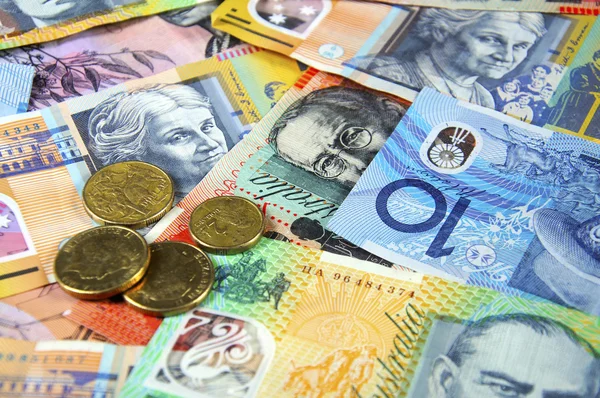Australian dollar recovered its intraday losses despite a weaker ASX 200 Index.
Despite lower GDP data on Wednesday, the Australian Dollar (AUD) rebounds intraday losses. However, the AUD fell during early Asian hours due to a weaker equity market. The S&P/ASX 200 Index has fallen for three straight days, reflecting a sell-off in technology sectors on Wall Street and a drop in mining equities.
Australian GDP (QoQ) increased by 0.2%, significantly lower than the predicted 0.3% in the fourth quarter of 2023.
The Australian dollar was mostly unfazed by the softer-than-expected GDP. GDP statistics. GDP increased by 0.2% quarter on quarter in the fourth quarter of 2023, somewhat lower than market projections of no change at 0.3%. However, GDP increased by 1.5% year on year, above the projected 1.4% but falling short of the prior growth rate of 2.1%.
The Reserve Bank of Australia (RBA) continues to watch the economy for signs of a downturn, with the goal of bringing inflation back to target. It forecasts a further slowing of economic growth to 1.3% by June 2024.
The US Dollar Index (DXY) seeks to end a three-day losing run, aided by a recovery in US Treasury yields ahead of Federal Reserve (Fed) Chairman Jerome Powell’s hearing before the US House Financial Services Committee on Wednesday and Thursday. Nevertheless, the US dollar (USD) is under pressure following softer-than-expected data from the US ISM Services Purchasing Managers Index (PMI). On Wednesday, ADP will release its February employment change report.
Daily Market Movers: Australian Dollar strengthens on risk-on sentiment.
The AiG Industry Index fell to -14.9 in January, down from -27.3 in the previous month.
AiG Construction PMI fell to -18.4 from the prior figure of -11.5.
AiG Manufacturing PMI fell by 12.6 points from the prior contraction of -23.8.
The Judo Bank Services PMI rose to a ten-month high of 53.1 in February. This increase moved the index above the 50.0 mark, indicating expansion, and it outperformed the prior figure of 49.1.
Judo Bank Composite PMI increased to 52.1 from 49.0. This marks a nine-month high.
The Australian Current Account Balance increased to 11.8 billion in the fourth quarter of 2023, compared to the previous estimates of 5.6 billion and 1.3 billion.
ANZ – Roy Morgan The Australian Consumer Confidence Index fell from 83.2 to 81.0. This latest statistic represents the lowest level observed so far in 2024.
Australia Melbourne Institute Inflation in February increased by 4.0% year on year, down from 4.6% the previous month.
Commerzbank economists believe that the Reserve Bank of Australia (RBA) will postpone rate decreases, providing support for the Australian Dollar (AUD) in the meantime. They do not see an immediate slowdown in the Australian economy. However, if clear signs of a downturn materialize, potentially suggesting a recession, the RBA may adjust. Its monetary policy position sooner.
February Services PMI indicates that the sector had a soft landing in 2023.
According to Matthew De Pasquale, an Economist at Judo Bank, the February Services PMI indicates that the sector had a soft landing in 2023 and is currently experiencing a comeback in activity in early-2024. While the durability of business activity is encouraging for economic growth and employment, it raises question on the probability of inflation returning to goal within the Reserve Bank of Australia’s anticipated timescale.
According to former New York Fed economist Steven Friedman, Federal Reserve policymakers are unlikely to decrease interest rates this year due to strong growth and volatile inflation. He projected fewer cuts than the three planned for 2024.
Atlanta Federal Reserve (Fed) President Raphael Bostic has made headlines. on Monday, voicing concerns about making a smooth landing. He does not anticipate consecutive rate reduction when they begin, but he does predict two 25-basis-point decreases in 2024. While inflation is projected to return to the 2% objective, Bostic believes it is too early to celebrate triumph.
According to the CME FedWatch Tool, there is a 4.0% chance of a 25 basis point rate decrease in March, with chances of cuts in May and June at 23.9% and 53.3%, respectively.
The US ISM Services PMI fell to 52.6 in February, compared to a prediction of 53.0.
ISM Services PMI fell to 52.6 in February, versus an anticipated drop to 53.0 from 53.4.
Factory Orders (MoM) fell by 3.6% in January, above the predicted 2.9% drop.
S&P Global Composite PMI (February) rose to 52.5 from 51.4.
In February, the US ISM Manufacturing PMI fell from 49.1 to 47.8, falling short of market expectations of 49.5.
In February, the US Michigan Consumer Sentiment Index fell to 76.9, falling short of the market’s forecast of an unchanged 79.6.
January, the US Personal Consumption Expenditure (PCE) Price Index increased by 2.4% year on year, compared to 2.6% previously, in line with market expectations. The indicator climbed by 0.3% month on month, compared to 0.1% the previous month.









